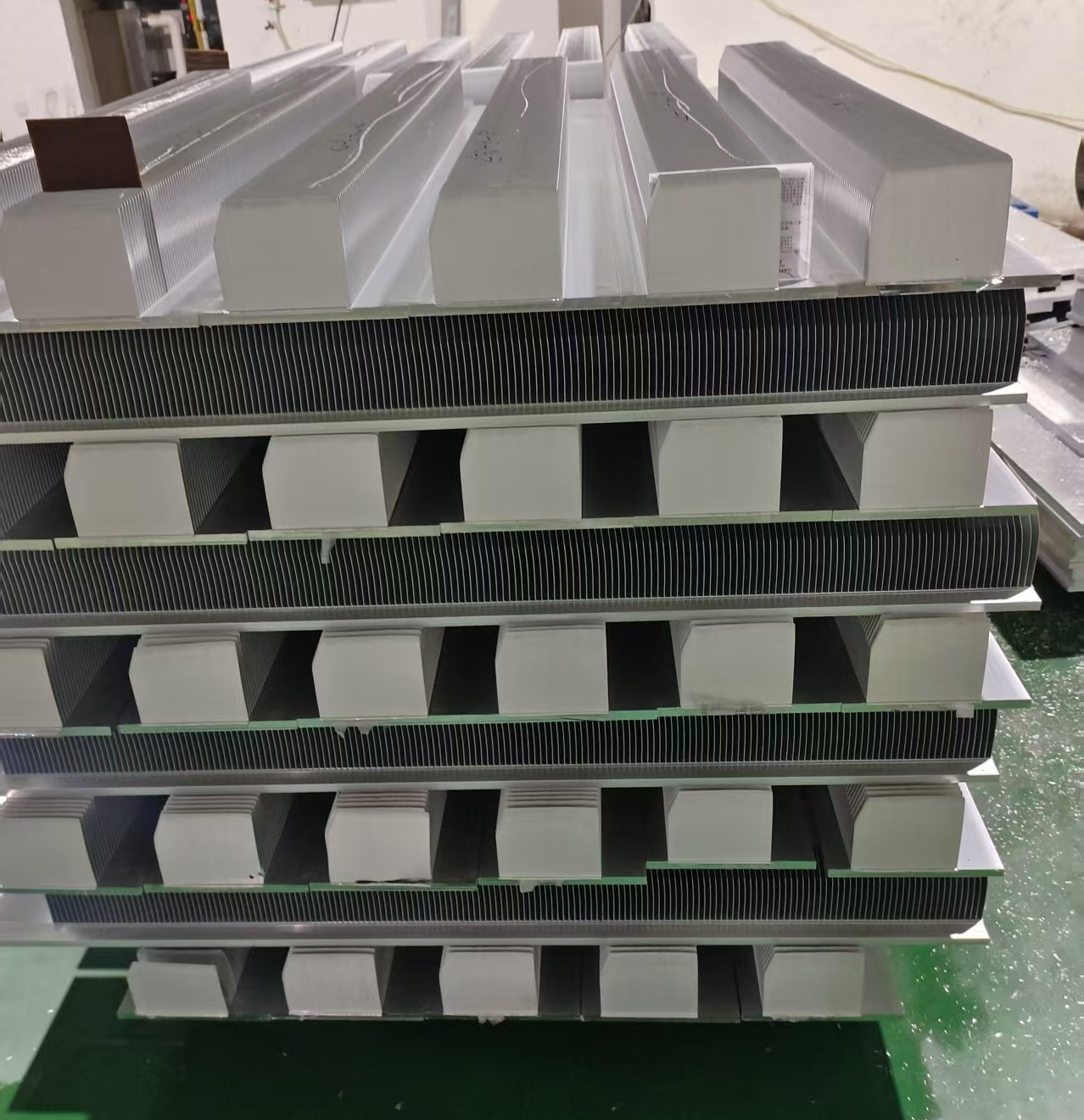The extruded material formation an angle heat sink by the skived fin process
A method to reduce heat sink processing costs by leveraging the skiving fin process for one-time integrated inclined angle heat sink formation.
Technical Principle
Key Features:
- One-Time Formation: The base and inclined fins are machined simultaneously, reducing process complexity.
- Precision Machining: Computer numerical control (CNC) ensures accurate control of fin angle, height, and spacing.
- Material Efficiency: Minimizes material waste compared to traditional fin-stacking or bonding methods.

Implementation Steps and Considerations
1. Extrude Material Selection for skived heat sink
- Use extruded materials with good machinability (e.g., 6063,1060 aluminum alloy for cost-effectiveness or copper for high thermal conductivity).
2. Design Optimization
- Inclined Angle Design:
- Optimize the fin angle based on airflow direction to enhance heat dissipation efficiency.
- Use simulation tools (e.g., ANSYS, COMSOL) to validate heat dissipation performance before prototyping.
- Fin Geometry:
- Balance fin thickness (Alminum skiving fins usually be 0.1–2.0 mm) and height (10–150 mm) to avoid machining instability (e.g., fin bending or breakage, or deformation).
3. Machining Parameters
- Tooling: Use high-hardness carbide or diamond-coated cutting tools to withstand long-term machining of metallic materials.
- Cutting Speed and Feed Rate:
- For aluminum: Cutting speed = 80–150 m/min, feed rate = 0.05–0.2 mm/tooth.
- For copper: Cutting speed = 30–80 m/min, feed rate = 0.03–0.1 mm/tooth.
- Cooling Lubrication: Apply water-based coolants or minimum quantity lubrication (MQL) to reduce tool wear and improve surface finish.

4. Process Integration
- Integrate the skiving fin machine with in-line quality inspection (e.g., vision systems for fin angle and dimension checks) to reduce rework.
- Avoid secondary processes (e.g., deburring) by optimizing cutting parameters to achieve smooth fin edges.
Application Scenarios
- Electronics Cooling: Heat sinks for CPUs, GPUs, and power modules.
- Automotive: Battery thermal management systems (BTMS) cooling and motor controllers air cooling.
- Industrial Equipment: Inverters cooling, server racks cooling, and LED lighting cooling.
Case Study (Theoretical Example)
- Traditional cost: $5.00/unit (extrusion + 10 fins welded + surface treatment).
- Skiving fin process: $3.50/unit (one-step machining + anodizing), with a 20% improvement in heat dissipation efficiency due to the optimized 45° inclined fins.
TAG:
Online Message
Any interest in Vansim.
We'll be appreciate and serve you wholeheartedly , Want to learn more about what we do, have questions or need a quote?






